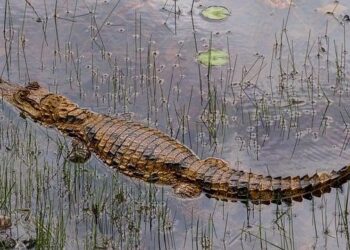As Russo explains, plate tectonics profoundly affect our entire planet and all of its natural processes. One big reason is that the movement of the plates causes the formation of volcanoes — basically, breaks in the crust that serve as vents for heat and lava — and their eruptions continually resurface the ocean basins that account for 72 percent of the Earth’s surface.
Just as importantly, volcanic activity associated with tectonic plate movement causes lighter, less dense minerals to separate from the heavier, denser ones in the Earth’s mantle. “The accumulation of these light minerals results in the development and growth of continents, on which we live,” Russo says.
Plate Movement and the Ocean
Tectonic plate movement also has helped to create, in numerous ways, the conditions that make life on Earth possible. It leads, for example, to the interaction of hot volcanic rocks with water in the ocean, and the leaching of ions from those rocks is what controls the oceans’ salinity.
“Life evolved in the oceans, in the presence of this ion-rich water, and humans, for example, have blood salinity equivalent to the salinity of seawater as a direct consequence,” Russo says.
Additionally, volcanic activity triggered by plate tectonics also has helped create the fertile soil that allows plants to grow and produce both food and the oxygen that sustains humans and large animal life, he notes.
Plate Movement and Climate
By rearranging the configuration of the continents and the ocean basins, plate tectonics also influences the planet’s climate. “For example, the current shapes of the ocean basins continually supply warm equatorial waters to polar regions, keeping the planet from developing very great extremes of surface temperature between equator and poles,” Russo says.
The mountains formed by tectonics also are among the planet’s most important carbon dioxide sinks, helping to draw down atmospheric C02 levels by forming new minerals. That process increases and decreases in response to shifts in temperature, enabling the mountains to act as giant thermostats.
Plate Movement and Evolution
The gradual shifting of the continental masses also has played an important role in biological evolution. “Speciation — the development of new species — occurs when a single group of plants or animals is divided into two groups that are no longer in reproductive contact, as, for example, often happens when a supercontinent breaks up and new ocean basins form between its continental fragments,” Russo explains.
All this might make Alfred Wegener — who died in 1930, when he became lost in a blizzard while on an expedition in Greenland — feel vindicated at last.
>>> Read full article>>>
Copyright for syndicated content belongs to the linked Source : How To Stuff – https://science.howstuffworks.com/environmental/earth/geology/plate-tectonics.htm































